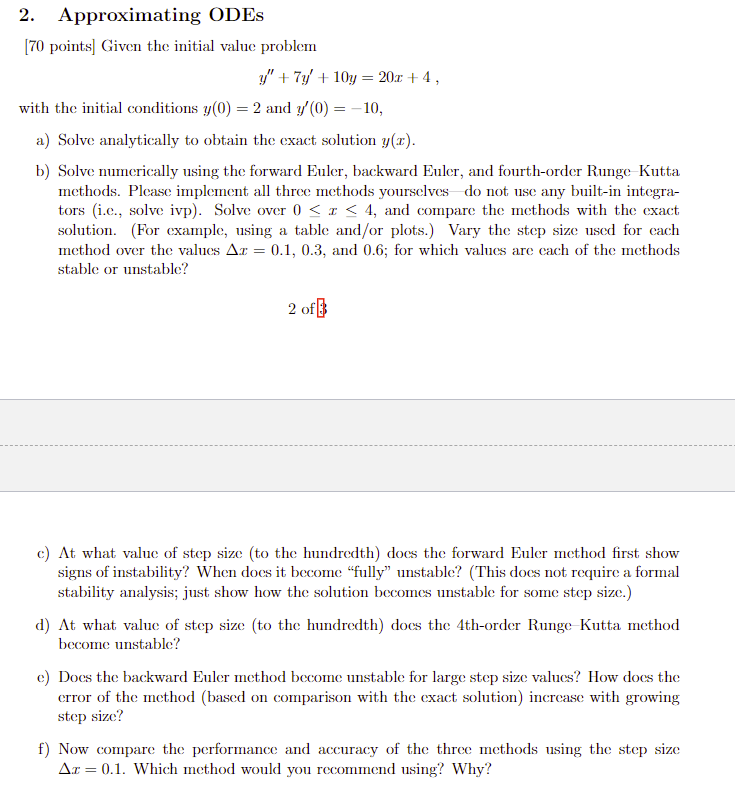Answered step by step
Verified Expert Solution
Question
1 Approved Answer
2. Approximating ODES [70 points] Given the initial value problem y + 7y+10y=20x +4, with the initial conditions y(0) = 2 and y'(0) =

2. Approximating ODES [70 points] Given the initial value problem y" + 7y+10y=20x +4, with the initial conditions y(0) = 2 and y'(0) = -10, a) Solve analytically to obtain the exact solution y(x). b) Solve numerically using the forward Euler, backward Euler, and fourth-order Runge Kutta methods. Please implement all three methods yourselves do not use any built-in integra- tors (i.c., solve ivp). Solve over 0 < x < 4, and compare the methods with the exact solution. (For example, using a table and/or plots.) Vary the step size used for each method over the values Ax = 0.1, 0.3, and 0.6; for which values are each of the methods stable or unstable? 2 of 3 c) At what value of step size (to the hundredth) does the forward Euler method first show signs of instability? When does it become "fully" unstable? (This does not require a formal stability analysis; just show how the solution becomes unstable for some step size.) d) At what value of step size (to the hundredth) does the 4th-order Runge Kutta method become unstable? e) Does the backward Euler method become unstable for large step size values? How does the error of the method (based on comparison with the exact solution) increase with growing step size? f) Now compare the performance and accuracy of the three methods using the step size Ar=0.1. Which method would you recommend using? Why?
Step by Step Solution
There are 3 Steps involved in it
Step: 1

Get Instant Access to Expert-Tailored Solutions
See step-by-step solutions with expert insights and AI powered tools for academic success
Step: 2

Step: 3

Ace Your Homework with AI
Get the answers you need in no time with our AI-driven, step-by-step assistance
Get Started


